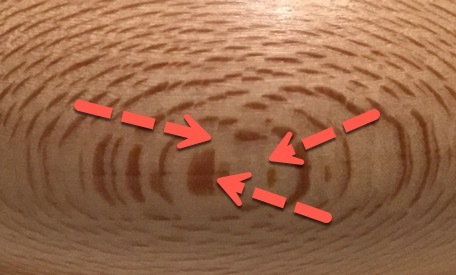Tru dat😁
Happy cake day @Drea🎉
Tru dat😁
Happy cake day @Drea🎉
Definitely: the use of the grain structure as layers and having the concentric reveal in the bottom is a very nice touch.
And happy cakeday @Drea!
If it isn’t too much to ask, can you do a few closeups of the end grain on the side walls? Sycamore has the coolest crinkling layers on the end grain. It’s very distinct.
I think this is going to be a whole area to learn about with the GF. Understanding how grain will interact with engraving will be a large curve, as each wood type and cut will clearly affect how it shows. And if you are engraving something other than proof grade or other “prepared” woods, but say driftwood or whatever, where the grain may be totally randomly oriented, this will have large effects. Once they get into wide use, probably need to have a wiki or thread just for wood: type + grain orientation + settings = photos
Sure when I get home I will do that 
I’m not a photographer like some of yous are, and here are a couple more closer ups one of the inside and one outside side with the unique grain. I hope these photos fulfill your visual wish of seeing the grain more closely ![]()
still love it.
Yes. That is exactly what I was talking about. I knew it had to have that grain pattern. Isn’t it lovely!
Thanks for doing the extra work.
Those grain patterns are my favorite part of the bowl. Thanks for helping me to highlight that lovely wood grain 
I love lathe work. Very nice.
Are those vertical stripes where the darker rings are down front part of the original grain, or are they the glue lines?
No glue. Bought out of an exotic wood box at Rockler. All the blocks are approximately 4" x 4" x 2.5" deep blocks. All kinds of wood, many I’ve never heard of  I got about 5 or so different and purdy ones to practice my turning skills.
I got about 5 or so different and purdy ones to practice my turning skills. 
Wow, wonder what happened to the tree to produce these lines?

Yes very curious 
This looks this way due to the orientation of the way the wood was cut before it was turned. 
yes and no; the vertical banding absolutely is, but i think some of the lines might be seasonal variation, isn’t it?
Makes me think of the stripes in quarter sawn oak. It has to do with the way the geometry exposes/intersects the grain.
Have you ever seen quarter sawn lumber? The mills don’t normally cut the wood this way anymore because they get more yield from the timber cutting the modern way, but antique furniture is often made with quarter sawn lumber. The lumber was quarter sawn because that cut made it much more stable (didn’t warp as easily). If you look at quarter sawn lumber you will see that it has a similar grain pattern to the bowl. 
Wood grain is probably my favorite natural art. So many unique variations all depending on how it is exposed.